Top Local Persian Foods (You should try at least once)
Persian food. What’s there to eat in Iran?
Traveling to different places is one thing; exploring marvelous places is quite another. It’s always thrilling to get to know new and exotic places. But you know, what I like most about traveling is visiting new sites and trying fresh Persian foods. This is one of the things I am fascinated about. If you have decided to take a few days off, I would recommend to you to enjoy eating top Persian foods that can be found almost wherever you travel and are mentioned in this post.
As the famous saying goes, you are what you eat; so, the food should not be only tasty, but also healthy, as well. Accordingly, some delicious Persian meals are brought here for you to enjoy their delicacy and healthiness while you are traveling to Iran. I would not hesitate for a moment to recommend you these pleasurable Persian foods.
1. Mashhad’s Shole
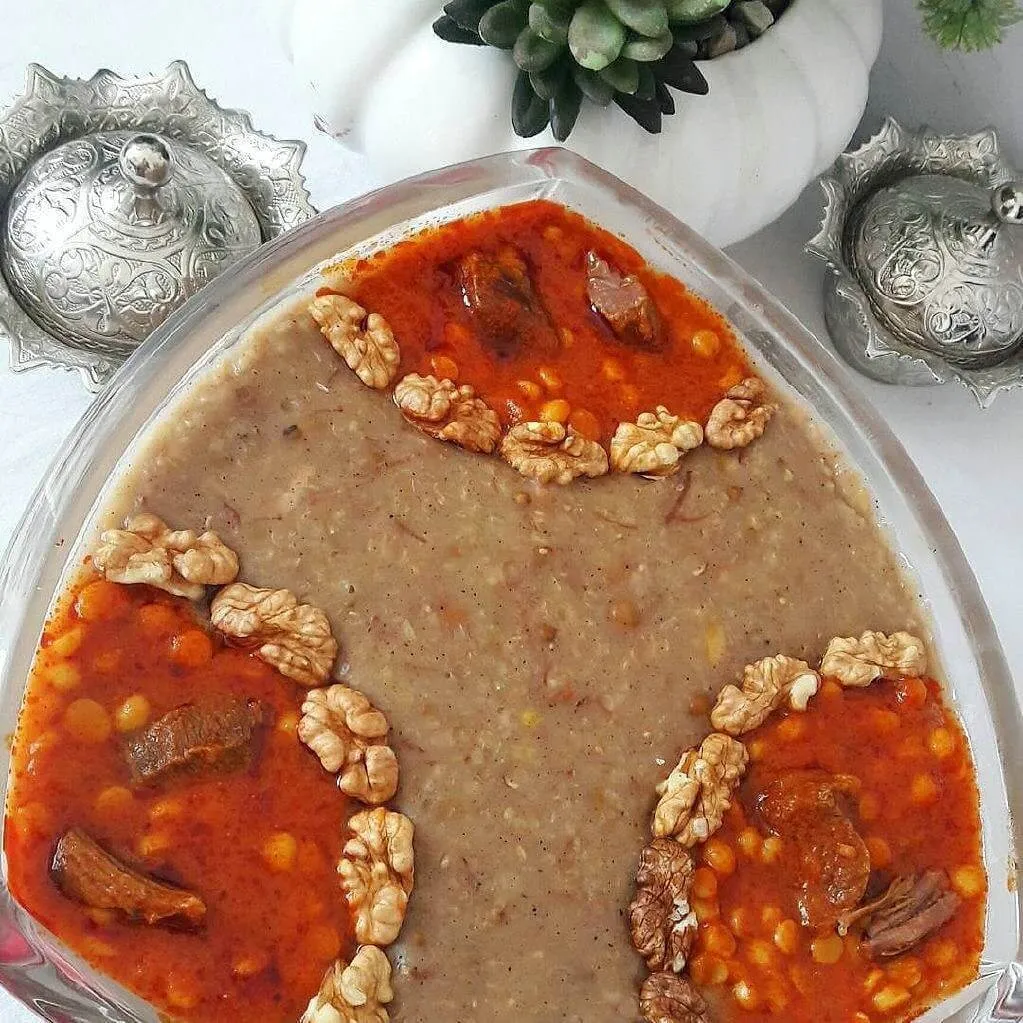
Ash Shole Qalamkar Mashhad or Mashhad’s Shole is an extraordinarily delicious and, of course, time-consuming Persian food that is often cooked in special occasions and ceremonies of Muharram and Safar. This plate, unlike other cities’ Shole Qalamkar around Iran, has no vegetables. The more meat it has, the more delicious it is. The peculiar feature of Mashhad’s Shole is that there is some Gheyme stew on it.
This food is from the Ash family. Ash – not to be confused with the residue left after a fire – is one of the original Persian cuisines cooked in almost all of Iran. It has a variety of such kinds as Ash Reshte, Ash Mast (yogurt), Ash Jo (barely), Ash Dough and so on which Shole Qalamkar is counted as one. The most common one is Ash Reshte and consists of vegetables, beans, and curd, and they use hot garlic, hot onion, and hot mint to decorate it. The main ingredients of this delicious Iran local food are meat, legumes, and spices that foreshank can be added to it to make it a tastier dish.
This kind of Ash is reminiscent of old memories for the people of Mashhad; the years they gathered together and cooked Shole, the white interlining that spread on the table, a glass of fizzy drink and a spoon beside it. As mentioned earlier, Mashhadian people serve Shole with Gheyme meat. This food has a very high nutritional value due to the use of various types of beans in it. Its age may return to the Qajar era (1789–1906) to the time of the Mongol invasion of Iran. At that time, due to the shortage of time and food, any ingredient found and available, was added into the large boilers and chefs stirring it on fire.
Ingredients of Mashhad’s Shole: an authentic Persian food
The legumes are protein plants that contain a lot of protein, carbohydrates, and minerals, iron, calcium, potassium, magnesium and vitamins, especially the vitamins of group A. In the food guide, the legumes are considered to be the part of meat group because they are rich in protein. Proteins of legumes are usually rich in lysine and are the best sources of herbs to supplement the grain. Since legumes have a high fiber and occupy a large volume of the stomach, create a feeling of early satiety. And because sugar is released gradually, we will be hungry later. Since it is heavy, you can count on it as a complete meal. Cooking this meal serves a great difficulty. Although most of the people buy it from the restaurant, it is worth trying!
2. Dolme Barg Moo (Vine leaf roll)
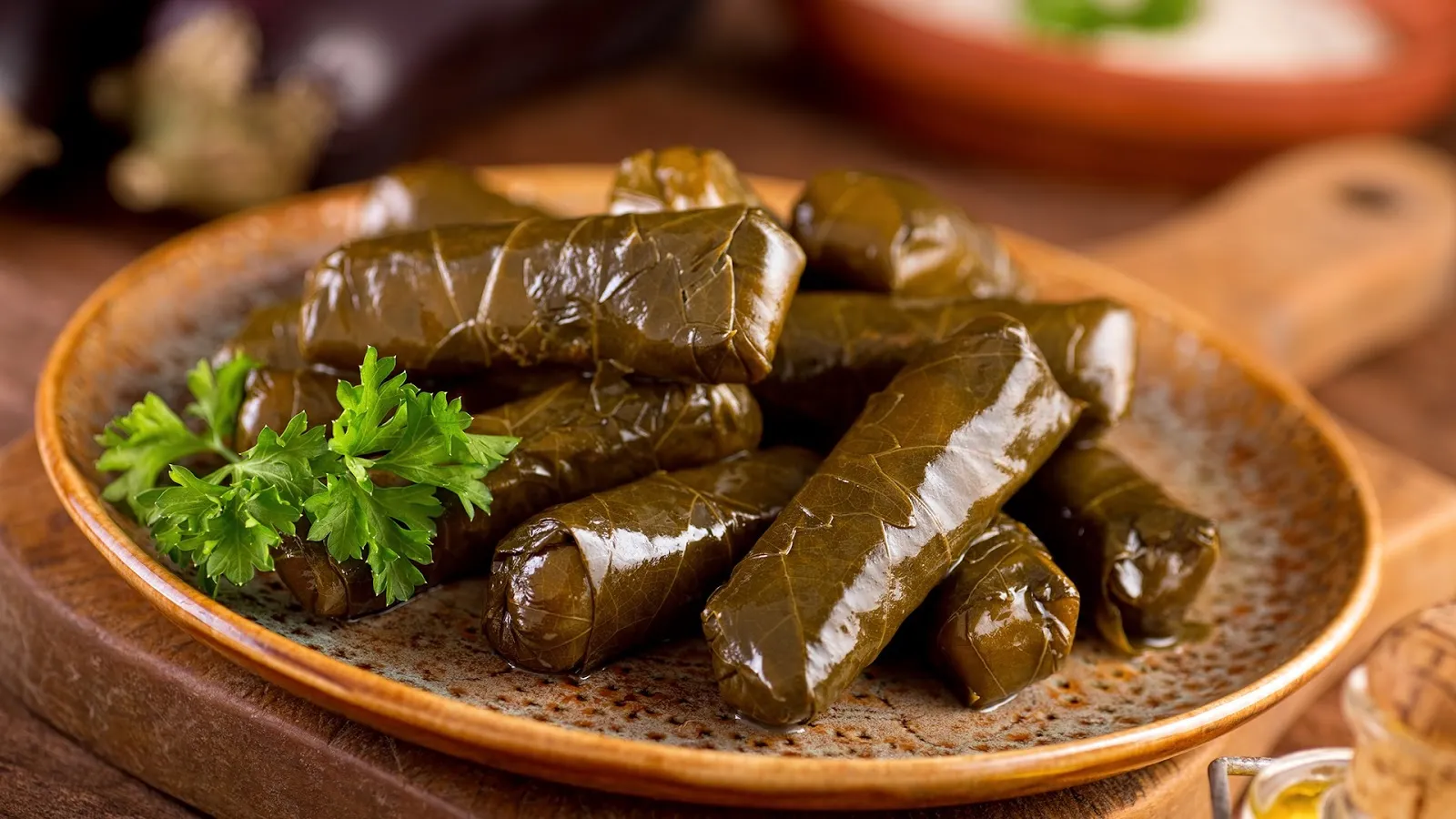
The Vine leaf roll is one of the local Persian foods in the East and West of Azerbaijan province. The food is originally a Mediterranean food, and the Mediterranean countries, including Turkey, use it as a meal, although in some countries the content of this meal varies slightly. Probably its supply and use has taken from Turkey to the western cities, and then it has reached to the other parts of Iran. In the middle of the spring, the fresh leaves of grapevine are found in the market, which is a pity not to use them. This Persian food is one of our traditional appetizers and is popular in many parts of our country.
This food is an energizer and useful for general strengthening of the body. People with high cholesterol level are better to have this food with fresh lemon juice. It can also help eliminate anemia due to the presence of iron, magnesium, and vitamin B1.
3. Kalle Joosh
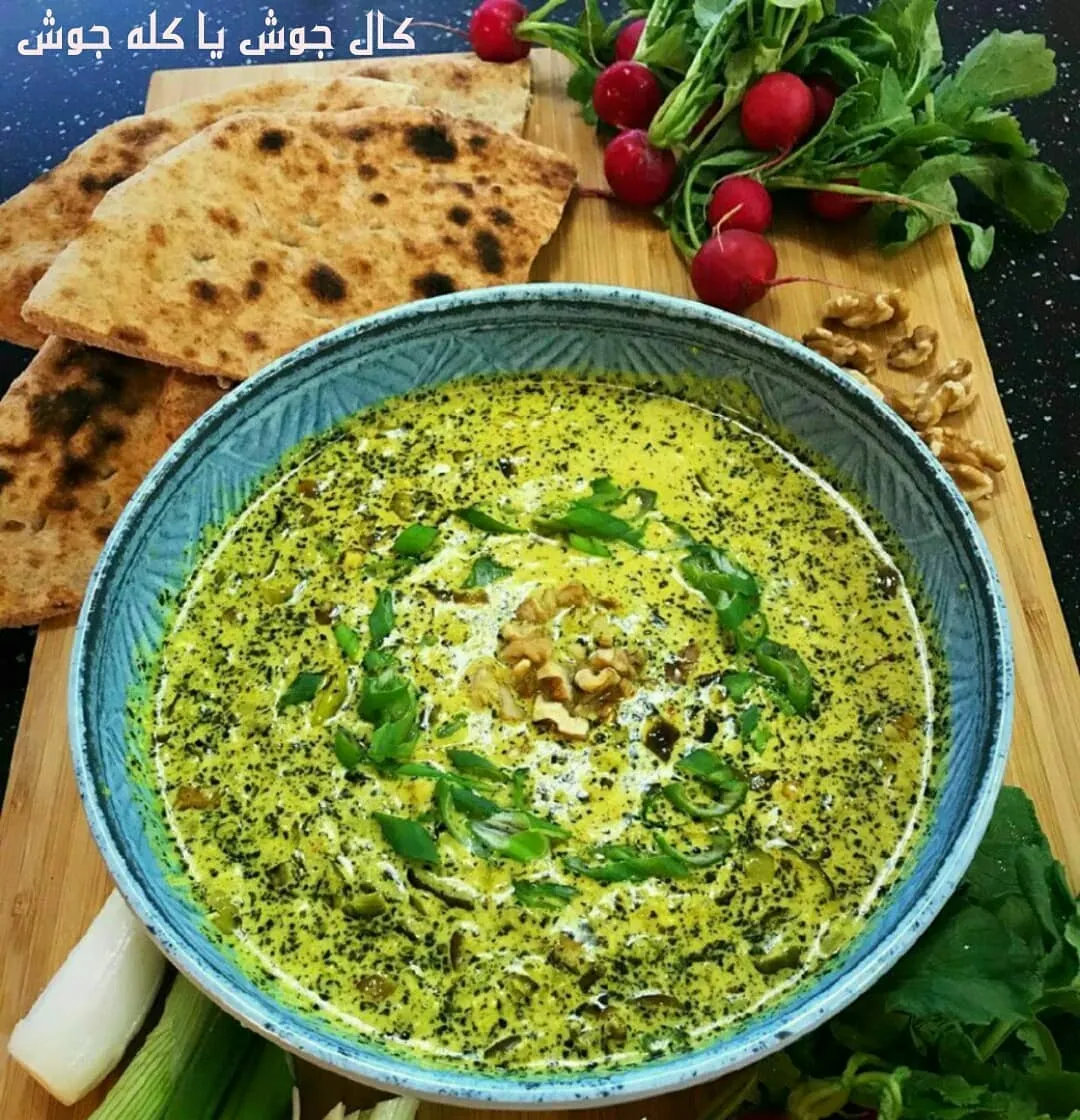
Kalle Joosh is one of the local and traditional Iranian cuisines belonging to Isfahan city and mainly in different cities of Khorasan and Yazd. This Persian food is locally known as Kala Joosh, Dough, Qrouti, Kal Josh, and Kashk Joosh. It is a mixture of curd, walnut, and vegetables, but its way of cooking is slightly different in various cities. This Iran local food is an excellent source of calcium for those who do not consume dairy because it has a lot of curds. It is interesting to know that in some cities a plate of fried eggplant is served next to this meal. Curd, with its low volume, is a miraculous food ingredient that contains all the properties of milk and includes calcium, fat, salt, protein, and niacin (vitamin B3). The amount of energy produced with 100 grams of curd is about 105 to 120 calories, which can be included as one of the energy suppliers in the daily diet.
4. Eshkene Esfenaj (Eshkene spinach)
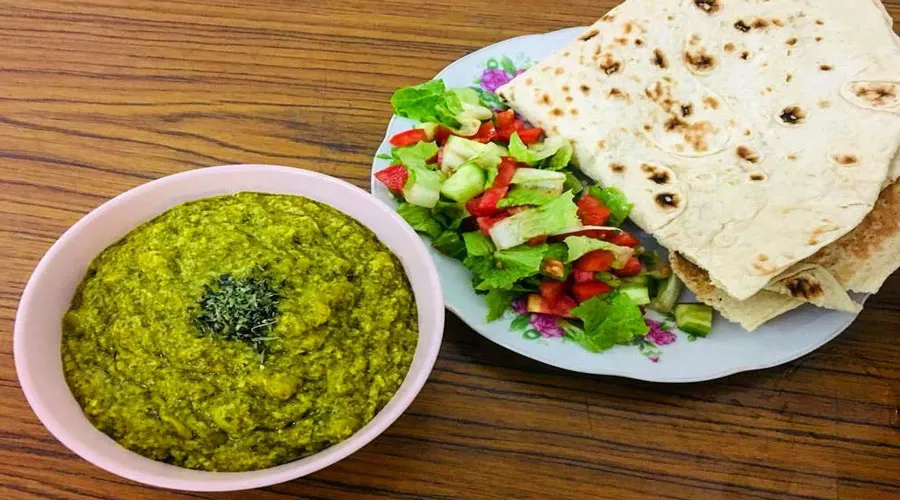
Eshkene spinach is a Persian food that is cooked throughout Iran, especially in Tehran. This delicious Iran local food is easy to cook and is welcomed at formal parties. To prepare Eshkene spinach, you need eggs, potatoes, onions, spinach, water, sumac, and spices. In appearance, this meal is very similar to Ash Reshte and served with some fresh hot bread. Nowadays, people in many countries of the world, especially the Asian and European countries, use spinach not only for their delicious flavor but also for their nutritional and therapeutic purposes, mostly in their children’s and adolescents’ eating habits. Trying out this Persian food at a local house is a chance to never miss out on, if you ever have it!
5. Daale Adas (Daal Lentil)
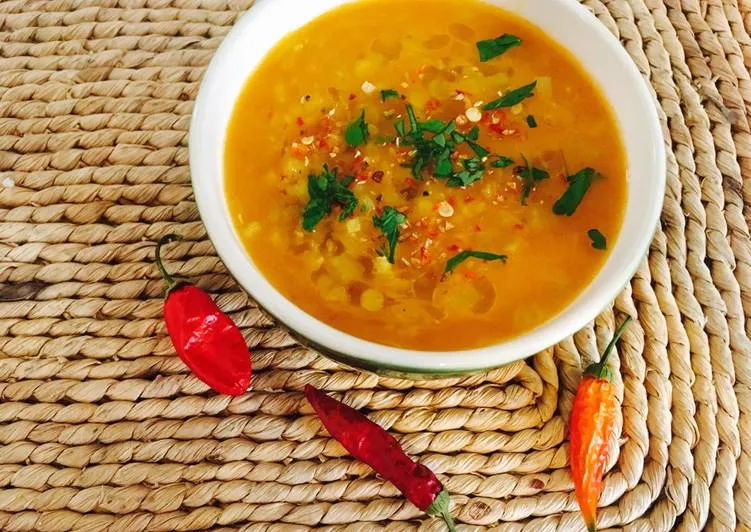
Daale Adas is a kind of bean and is from lentil family that has a reddish color and has a taste similar to tomatoes. This Persian food is made in Bushehr province of southern Iran and the border of Persian Gulf.
One of the essential properties of this plant is a gastrointestinal enhancement. Elderly and people with osteoarthritis have better use of it as an oral drug for treatment. This Persian food is fresh, fast, and finger-licking. It’s interesting to know that Daale Adas can be considered as perfect food because it has a lot of energy. Two cups of lentils have 70 kilos calories of energy, so it can be used as a convenient breakfast to provide enough energy for daily activities. You can also use this food to save energy in your body before exercising, working, or climbing. To find this Persian food, you need to search in more traditional restaurants.
6. Yatimche
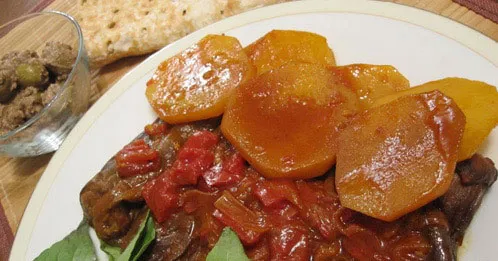
Yatimche is one of the Iran local foods that are prepared in every city in a particular way. People in Shiraz, instead of eggplant, add pumpkin, and Azeri people cook it with beans and lentils. Potatoes are also one of the main ingredients of this meal. Here is a recipe for the Kashani people. The people of this city, instead of butter, add Dorde to in this Persian food. The Dorde is a brown oil blend that is formed by water a large volume of butter at the bottom of the plate, and many consumers consider it more delicious than the butter itself. Of course, eating vegetables and Sangak bread is also recommended besides this Persian food.
The reason why it is called Yatimche is that it does not have any meat. Yatimche is one of the local cuisines of Neyshabur in Khorasan Razavi province, and the Neyshabur Yatimche is different from the North Yatimche. In this type, lentils, beans, and peas are used in addition to eggplants and depending on taste, curd, and mint, or tomatoes can be added.
7. Yakhni (meat with rice)
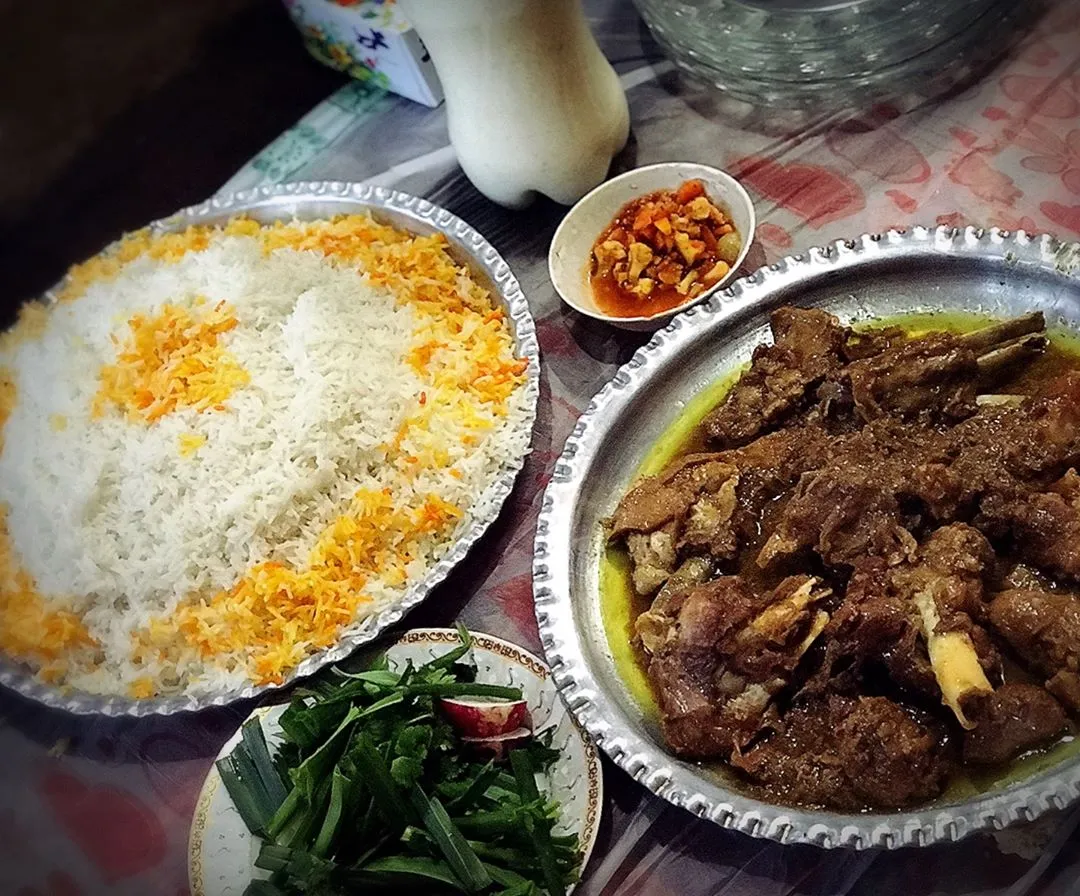
Yakhni stew, Yakhni with rice, chicken, or meat is one of the local foods of northern Khorasan and is attributed to the city of Dargaz. In the Khorasan area, various types of meat are produced which Mashhad’s Chelo Gusht (red meat with rice) and Yakhni are among the most famous of them. Dargaz’s Yakhni is a very delicious and easy-to-cook dish. One of the reasons for delicious this gourmet food is the use of local onions in Dargaz.
Dargaz’s Yakhni is made of gigot, a lot of onions, salt and turmeric, and animal or butter oil. In this meal, the onions are caramelized, and only turmeric and salt are used in making this food. Sometimes some rumps are used for cooking it.
Yakhni originally means cooked meat or cooked; therefore, in different regions of Iran and Afghanistan, different kinds of Yakhni are cooked like Abgusht Yakhni, peas Yakhni, cabbage Yakhni, and eggplant Yakhni. In most dictionaries, cooked meat is used as Yakhni (as opposed to raw), and it usually means refining meat to cook it. Of course, the pronunciation of this Persian food is varied in different dialects. For example, in the south of Iran and cities like Bushehr, it is also called Yukhni.
8. Alooche stew (Plum stew)
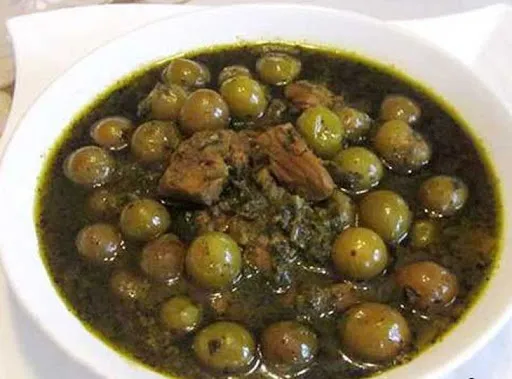
This is a very stomach-friendly Persian food and also a delicious meal for parties and formal gatherings in Kerman. Plum is the spring season’s fruit, and this is why this meal is cooked in the spring and has a lot of fans. In preparing this meal, meat, beans, tomatoes, dried vegetables (parsley and coriander), onions, plums, lemons, and special spices are required. The method to make this food is straightforward, and it has an entirely different taste for those who are interested in sour food. This Perisan food is also made with meat and chicken, the taste of which is unique, and its baking depends only on the taste and the time it takes to bake because the Alooche stew with chicken is less time consuming than Alooche stew with meat.
9. Chekderme
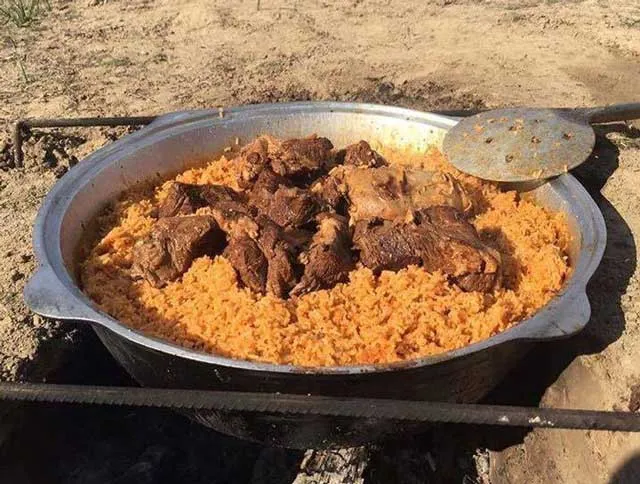
What I like most about Turkmen is the famous Turkmen food named Chekderme. If you travel to Gorgan, make sure you find an opportunity to eat Chekderme. If you eat this food alongside the shepherds or the locals and the villages, the smoked rice flavored on fire and charcoal will make your meal even more enjoyable for you. An authentically Persian food, Chekderme is like Estamboli (green beans with rice), but it has meat instead of potatoes, and It is quick and easy to cook. They slice lamb meat in the Turkmen desert and saute them with onion; then they add spices and rice into the pot. Eventually, the orange miracle of Turkmen desert is ready to eat. If you’ve traveled to Golestan province, be sure to taste Chekderme. Serving this Persian dish with yogurt and Shirazi salad is more delicious. Bon appetit!
10. Kabab Torsh (Sour Kebab); Kebab the Ultimate Persian Food
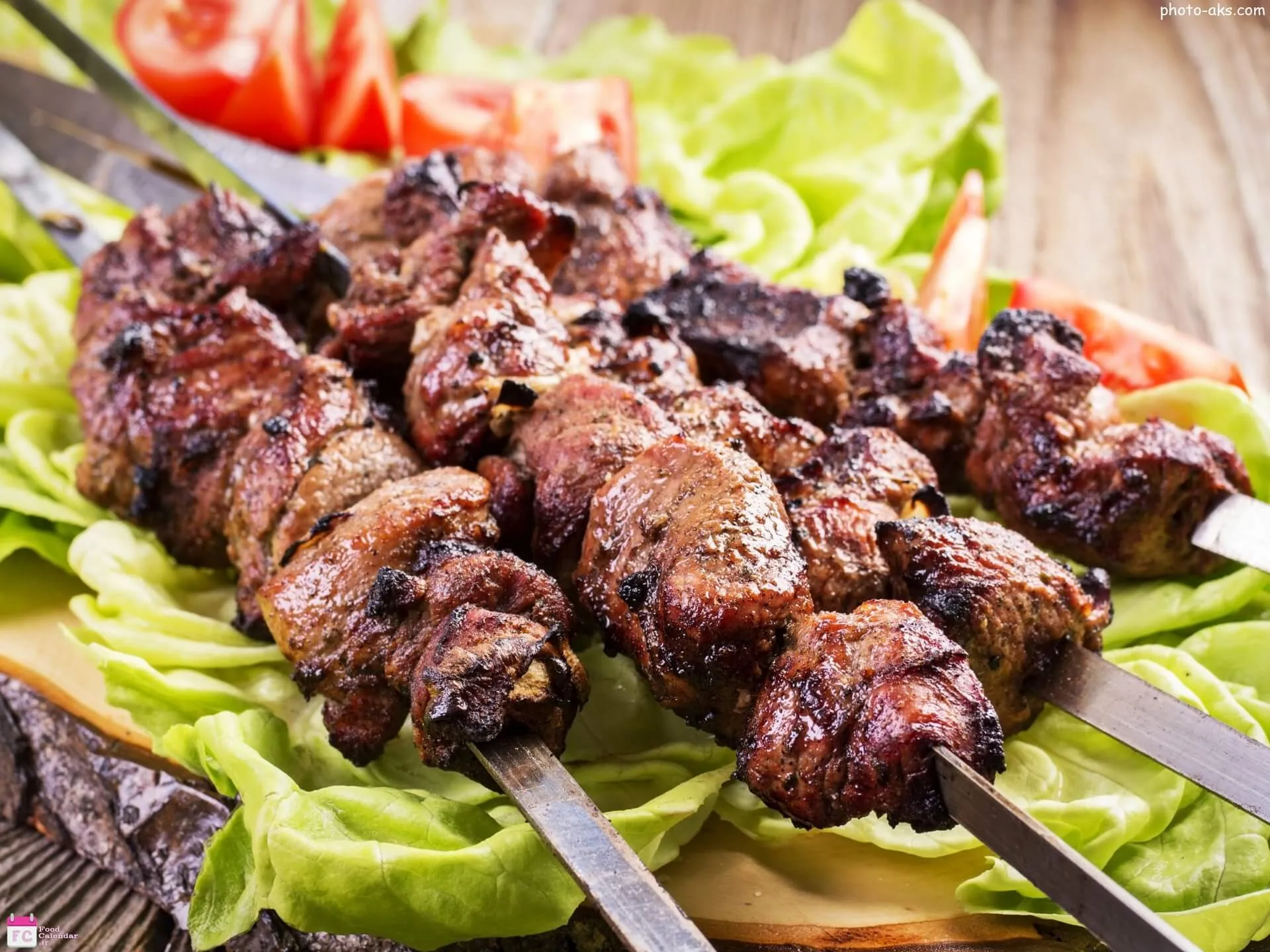
Kebab is a genuine Persian food that has been widely used by Iranians since ancient times. Some people believe that cooking Kebab has become popular since the Mongols in Iran, and some believe that it has been popular since Naseeruddin Shah (1848-1896 AC). Naseeruddin Shah lived in Tabriz during the Crown Prince’s time. As he was a real Kebab freak, he had a friend named Haj Ali Allah, who was a skilled chef for cooking Kebab and became the founder of the first Kebab restaurant in Tehran. Sour kebab is also one of the types of kebabs that bakes it from the past to today among the people of the north of Iran, although there is no collective agreement about its origin. Some people, of course, regard this food as a Gilani food and believe that sour kebab is first created in Gilan, but now it is being made all over the northern part of the country and in the restaurants of the north. Sour kebab is made in any part of the north uniquely; the parts of the north of the various areas of the vegetable shed in it, but generally in the order of baking this food certainly walnuts, pomegranate sauce, and pepper can be seen.
Kebab is hard to digest, so it is better to use it at midday to have the opportunity to digest it in the digestive tract. Some people think that the sourness of this food can prevent the absorption of meat fats in the body, while this belief is entirely incorrect, and sourness is not a reason for not absorbing fat. Another important point is that people who have gout should not eat this food.
11. Kalle Pache (sheep’s head and leg)
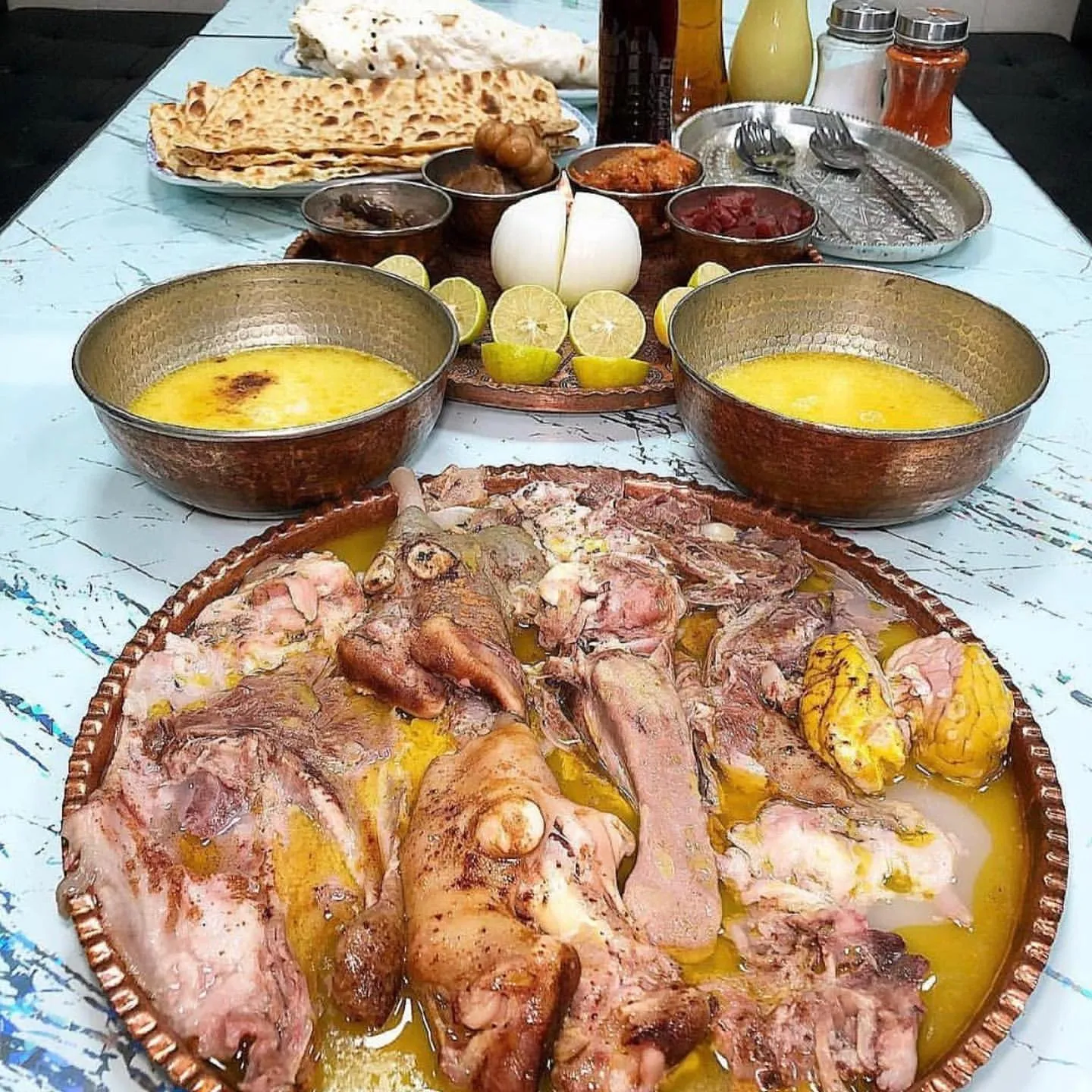
For those who like greasy food a lot, this (ultra) Persian food can be the best choice! Kalle Pache is an old Iranian cuisine and is usually eaten in cold seasons to increase body heat and fat storage. Kalle Pache has Maghz (brain), Chesh (eye), Bana Goosh (ear), Pache (Leg), and Zaban (tongue), each of which is delicious and flavorful. Each of these parts also has different properties. The tongue is similar to other red meat, and it is better not to overdo it. They say minimize the red meat to keep a healthy heartbeat! It is also fleshy, and if you do not eat fat, it is better and healthier.
In general, the best part of Kalle Pache is the leg that has the lowest fat, and the worst part is the brain which has the highest fat and cholesterol. It can be said that the brain has as much as eight yolks of cholesterol and is, therefore, contains high levels of fat and can increase blood lipid levels. Try eating this Persian food the Iranian way; wake up ultra-early to have Kalle Pache at a local shop.
12. Shole Zard (Yellow Shole)
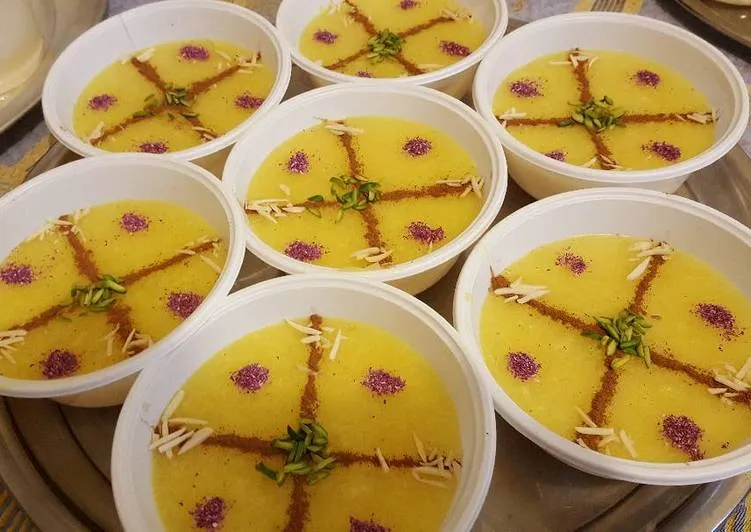
Shole Zard, with its warmer nature, is one of the most suitable Persian food (desserts) for autumn. Also in Iranian culture, Shole Zard is commonly used as Nazri food served in Muharram. Saffron contained in this dish has antidepressant properties, while Iranian traditional medicine has also attributed a lot of fun and funny properties to saffron. Perhaps the reason for choosing this meal for the ritual and mourning ceremony is the saffron’s ability to reduce sadness and mitigate the face of autumn depression.
Shole Zard with sweetened flavor, along with Golab (rose water), coconut powder, pistachios, and almonds, has a high nutritional value and can be a good and suitable dessert to replace harmful foods for children. This dessert is a popular, traditional, and delicious Iranian cuisine that is usually cooked in Ramadan and religious ceremonies.
13. Abgoosht (Meat and water); Number one Persian food.
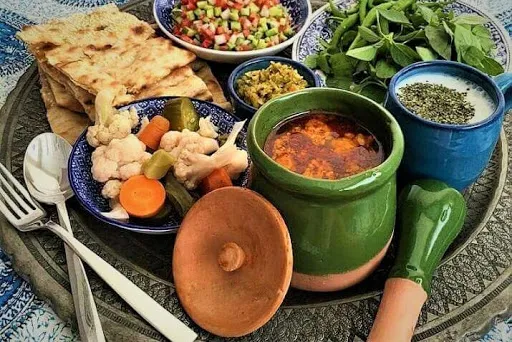
Abgoosht, Shoorba, Dizy or Piti in Azeri language is a savory and authentic Iranian cuisine, which unfortunately these days less attention has been given to this old food. All people are aware of the obvious, gourmet, and, of course, the unique blend of this food. Abgoosht has two parts, the “wet” section, called “Trid,” and the “dry” section, which is called “Koobideh.” The same water and meat that made this food and are cooked together but eaten separated. If you do not separate these two parts, it will become like a distasteful soup.
Abgoosht or Dizy can be considered as an authentic Persian food and is one of the ten most popular Iranian cuisines. This food is beneficial for the growth of the body due to having potatoes, legumes, onions, and various vegetables that are rich in protein, calcium, and iron.